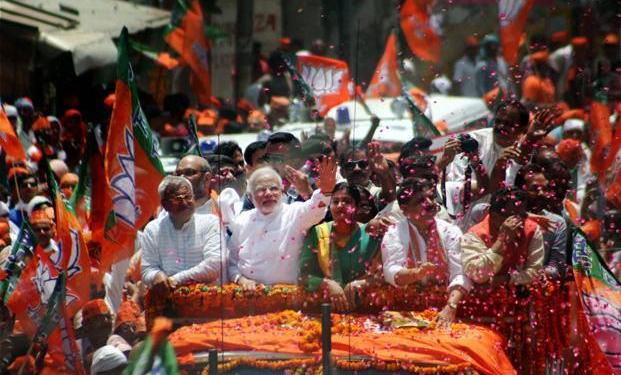The 2019 Lok Sabha polls are all set to stage some kind of a transformation as far as India’s elections are concerned. The ongoing Lok Sabha elections seem well poised to set the record of highest voter turnout in independent India’s history. According to Election Commission data, the overall turnout in the ongoing elections stood at 68.31 per cent, compared to 67.6 per cent in 2014 Lok Sabha polls, after four phases of voting. The 2014 polls had recorded the highest voter turnout among all the Lok Sabha polls held till date with a voter turnout of 66.4 per cent.
The spike in voter turnout in the ongoing polls was pushed further by a significantly higher voter turnout during the fourth phase. The voter turnout during the fourth phase recorded 2.61 per cent higher turnout than the 2014 figure. Voter turnout is higher than the 2014 levels during the first and third phase, the turnout stood at 69.5 per cent and 68.4 per cent respectively for these phases. During the 2014 polls, the turnout for the first and third phases had recorded turnout of 68.77 per cent and 67.15 per cent respectively. Only the second phase had witnessed a marginal reduction as compared to the 2014 polls. It must also be noted that by the end of fourth phase, voting had been completed in 373 of the 543 Lok Sabha seats, i.e. around 70 per cent of the total seats. Therefore, the 2019 polls have recorded the highest turnout for a substantial portion of the Lok Sabha seats and as such any drastic decline in the total turnout seems unlikely from here.
Among the states, where elections have been concluded, Assam recorded the highest turnout at a mind boggling 81.5 per cent in 14 constituencies in the state. On the other hand, West Bengal where polling is going to be held in the upcoming phases as well, recorded a massive turnout of 82.53 per cent.
It is important to mention here that the fifth phase has recorded a turnout of 63.24 per cent even as fifteen more Lok Sabha constituencies went to polls. This is again a substantial growth as the overall turnout for these 51 seats during the 2014 polls stood at 61.75 per cent. Therefore, the surge in the voter turnout has been sustained. If we add these 51 seats to the 373 seats which had already gone to polls by the fourth phase, the figure stands at 424 seats. The voter turnout is clearly enjoying a comfortable lead over the 2014 polls.
In the run up to the ongoing Lok Sabha polls, PM Modi, in a massive outreach to the young voters of the nation, rose above party lines and petty political differences, asked youth of the nation to come out in large numbers and cast their votes in the upcoming Parliamentary polls. In his blog titled, “Four Requests For Democracy”, PM Modi highlighted how voting is one of our prime duties. He also urged for the creation of an environment in which things like getting a voter ID card and casting vote, becomes an occasion for celebration.
As is evident from the 2014 Lok Sabha polls, a high voter turnout gives BJP the upper hand. This is because a high turnout means that the core voter base of BJP, the working middle class, has come out to vote. The working middle class, which usually stayed away from the exercise, has gradually become more aware of the politics in the country and this is a very good sign for the BJP.































